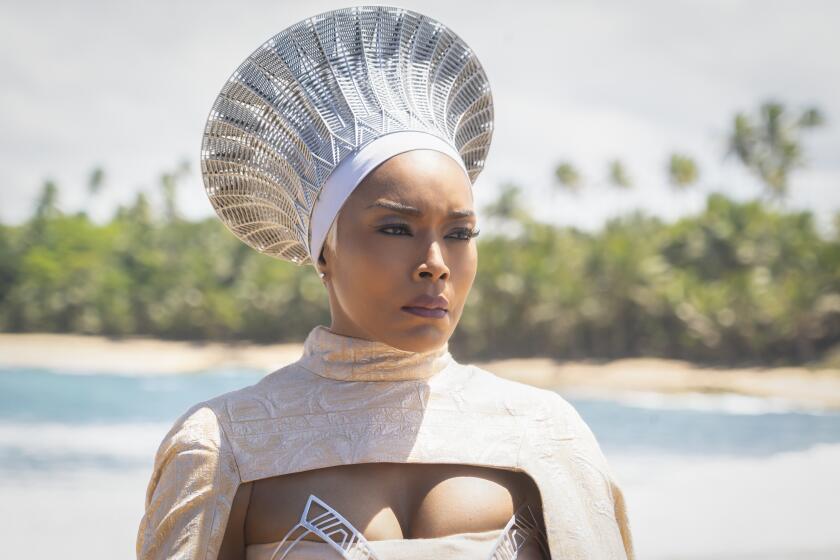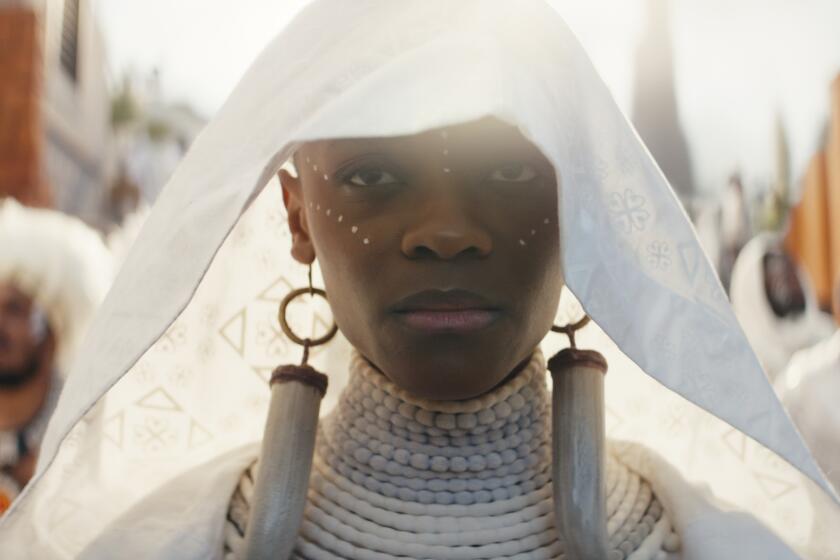The jeweler behind ‘Black Panther 2’ reveals one last Easter egg you might’ve missed
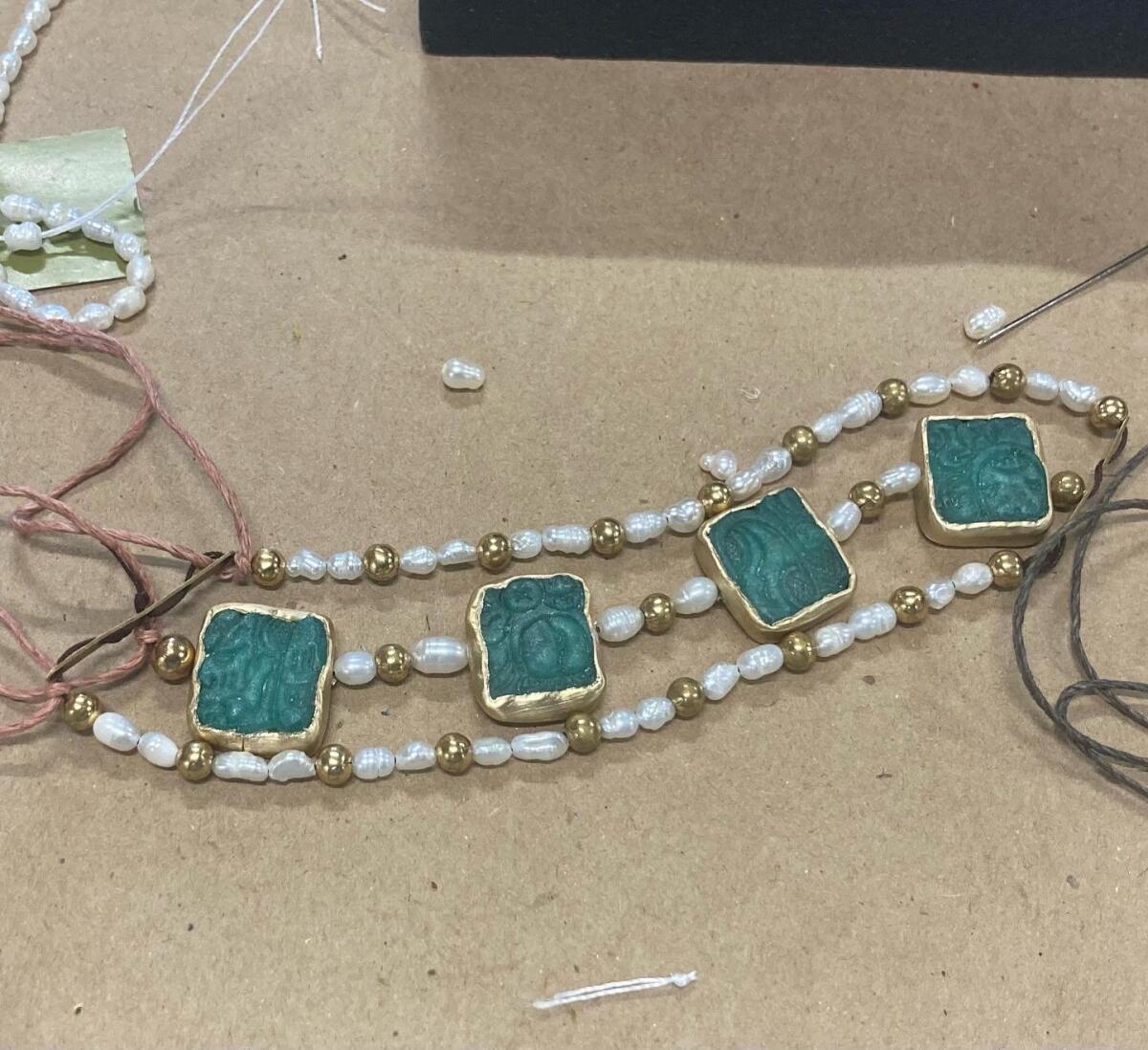
- Share via
“Black Panther: Wakanda Forever” received five Academy Award nominations last month, including one for costume designer Ruth Carter and her team, which includes Douriean Fletcher, a jeweler who created the metalwork seen on the Dora Milaje as well as signature pieces that adorn Oscar nominee Angela Bassett’s Queen Ramonda and other members of the cast.
One piece in particular plays a major role in the movie: the bracelet that Namor (Tenoch Huerta), from the undersea nation of Talokan, gives to Shuri (Letitia Wright), which eventually helps restore the powers of the Black Panther.
‘Black Panther: Wakanda Forever’s’ Angela Bassett is a 2023 Oscar nominee for supporting actress — and the first actor nominated for an MCU project.
After “Wakanda Forever” debuted in theaters last fall, the work on the film stayed with Fletcher; the research and expert interviews on Mayan culture and relics she conducted for the project even fueled a trip to Belize, where she shared her work with locals and forged an even deeper connection with the symbols and stones used for the Talokan scenes in the film.
Audiences can pause to take in Fletcher’s craftsmanship at home when “Black Panther: Wakanda Forever” premieres on Disney+ on Wednesday. We caught up with Fletcher, who also designed the metalwork in the first “Black Panther” movie, to ask her about the differences in creating looks for this film and the meanings behind them.
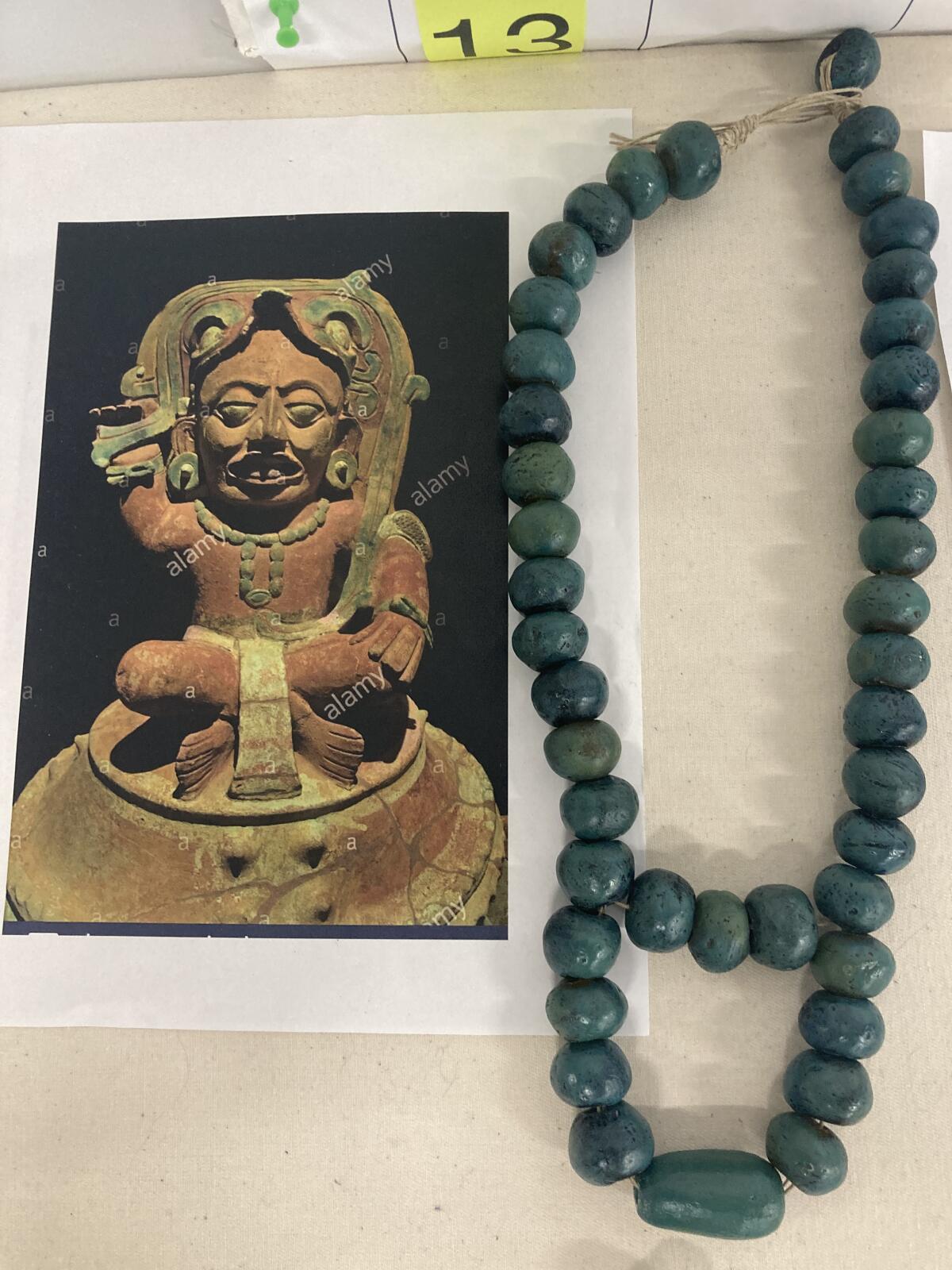
For “Wakanda Forever,” did you feel you needed to be different for this movie compared to the original “Black Panther?”
I wanted to put more of myself into it — the reason why I was brought onto the film. I wanted to put my aesthetic in it and lend to the story and the culture of Wakanda. That’s why Ruth wanted me on her team, because of my aesthetic, my understanding of African cultures and how my designs and my creativity connects with that.
When you described your work on the first movie, you painted a mental image of you in your goggles and apron, holding torches, and creating items on the spot. What was the atmosphere like in terms of creating for this film?
For all of the pieces that Ramonda wore, I had an assistant. And then for building out the Mayan or Talokaneal pieces, there was so much that went into that. Before they enter the water [on the actors working underwater], I had a team of people help as I designed a piece, put the components of the pieces and their materials together, and then the team would actually create those pieces.
It was amazing because I was able to talk to an anthropologist about the culture and the history of the Mayan people to be able to make pieces that were as realistic as possible. I know we see a lot of jade. We think of the big jade pieces. But when you really explore more into the rest of the community and the culture and the society, not everybody wore jade. That was only for the royalty. So to be able to dig deep and discover other materials they wore and incorporate that was amazing. And I was able to do that and then allow the team to come in and build the pieces behind me.
In doing your research, what did you find that may have either surprised you or led you on a different path in terms of what you were going to make?
Actually doing some research and talking to the anthropologists, you realize what applies to a lot of different cultures ... that these pieces that the Mayans wore were reflections of the regions that they lived in. So if you live near the water, you’re more likely to wear pieces that are shells. If you live inland and you can’t afford jade, you’re more likely to utilize other materials like obsidian or agate or whatever other natural gemstone that they had access to. And it’s also based off of where you are within their caste system.
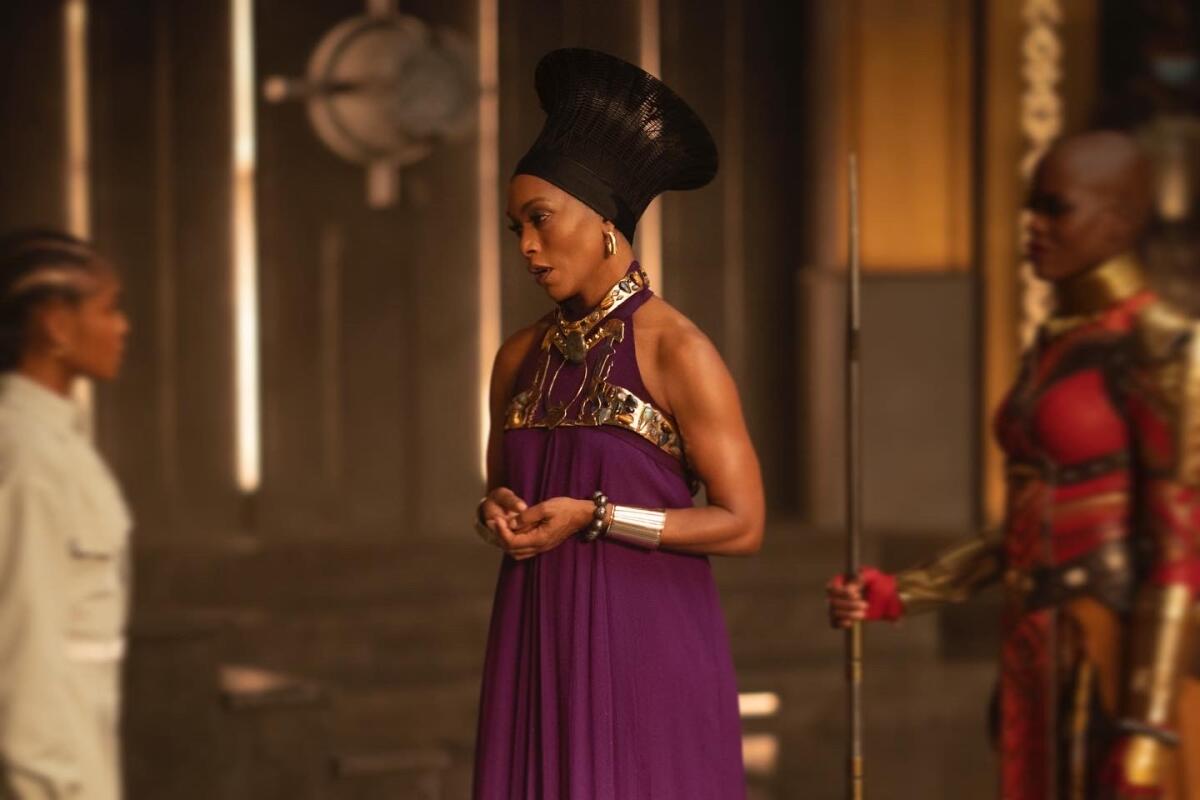
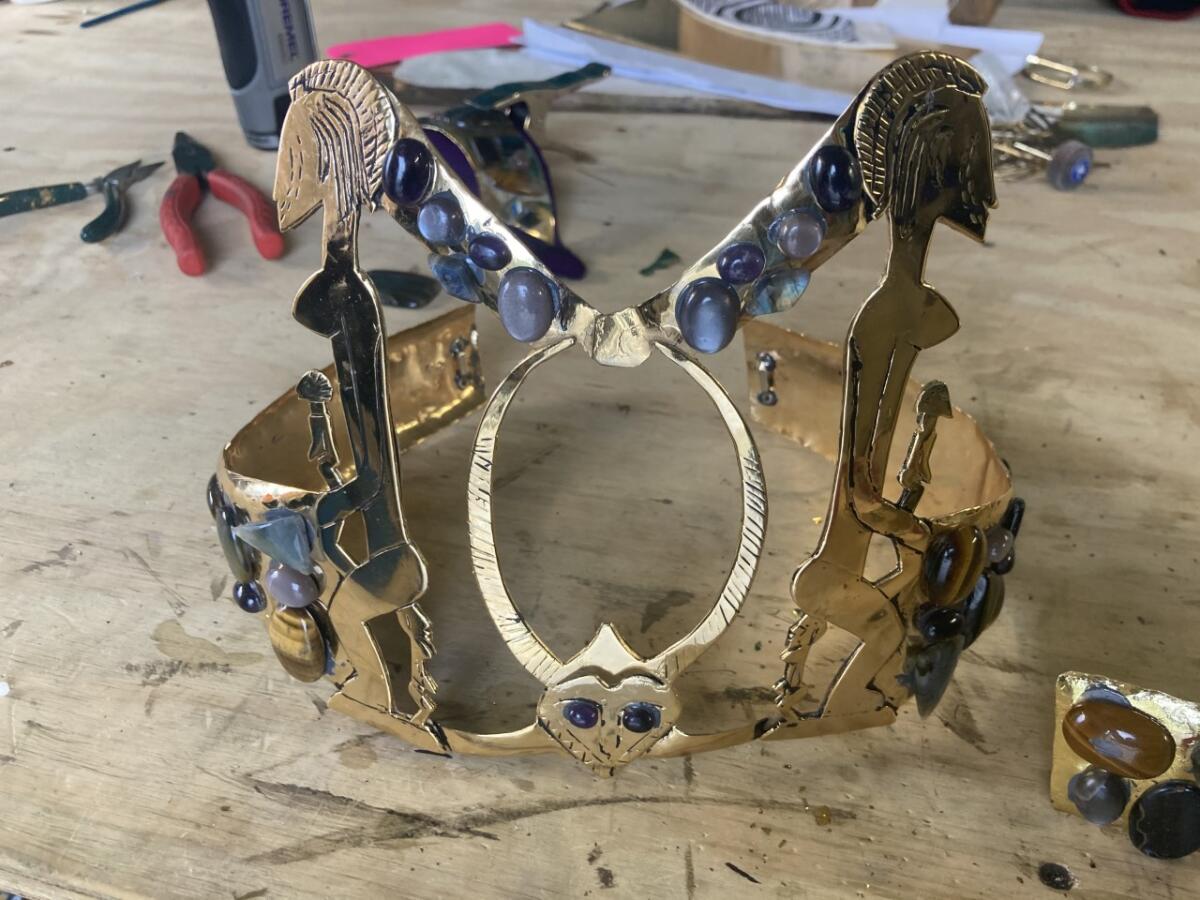
And it’s important to the story. The bracelet that Shuri was given by Namor ended up being probably the most pivotal action in the movie. How did you approach creating that specific piece?
That piece was definitely more so an intuitive piece that I made in three days, maybe four days. ... I was given the story of who Namor was because most of the things I was working on were for Ramonda and the Dora. And I had my line of questioning: Why was this piece important? Who was his mother? Why was she under the water? Things that I just didn’t know because I’m not a Marvel super-fan. There were just things I didn’t know about Sub-Mariner [the character’s comic-book antecedent]... Once they told me that she came from above the ground and how she had to go underwater, I created a piece that incorporated parts of the ocean and parts that signify water, but also knowing that there was vibranium in the bracelet.
Letitia Wright, Angela Bassett, Danai Gurira and Lupita Nyong’o return to Wakanda without the late Chadwick Boseman in Ryan Coogler’s stirring follow-up to “Black Panther.”
Now that you’ve seen the movie, after you’ve made everything that you made and you kind of pieced everything together, how do you feel about the importance that your creations have in the film itself?
Just seeing it come together with what was happening at the time and everyone, like, processing Chadwick’s [Boseman] not being there. ... It was beautiful to see everything within its storyline. So to see Ramonda with the earrings at the U.N. and seeing the labradorite that I chose to use, seeing how the light reflected on it when she would move in that power of the vibranium, seeing it all come together was beautiful and exciting, especially from where I started selling literally on the streets. So coming from there and now being able to create and adorn this idea of pride and power, regality and femininity — amazing.
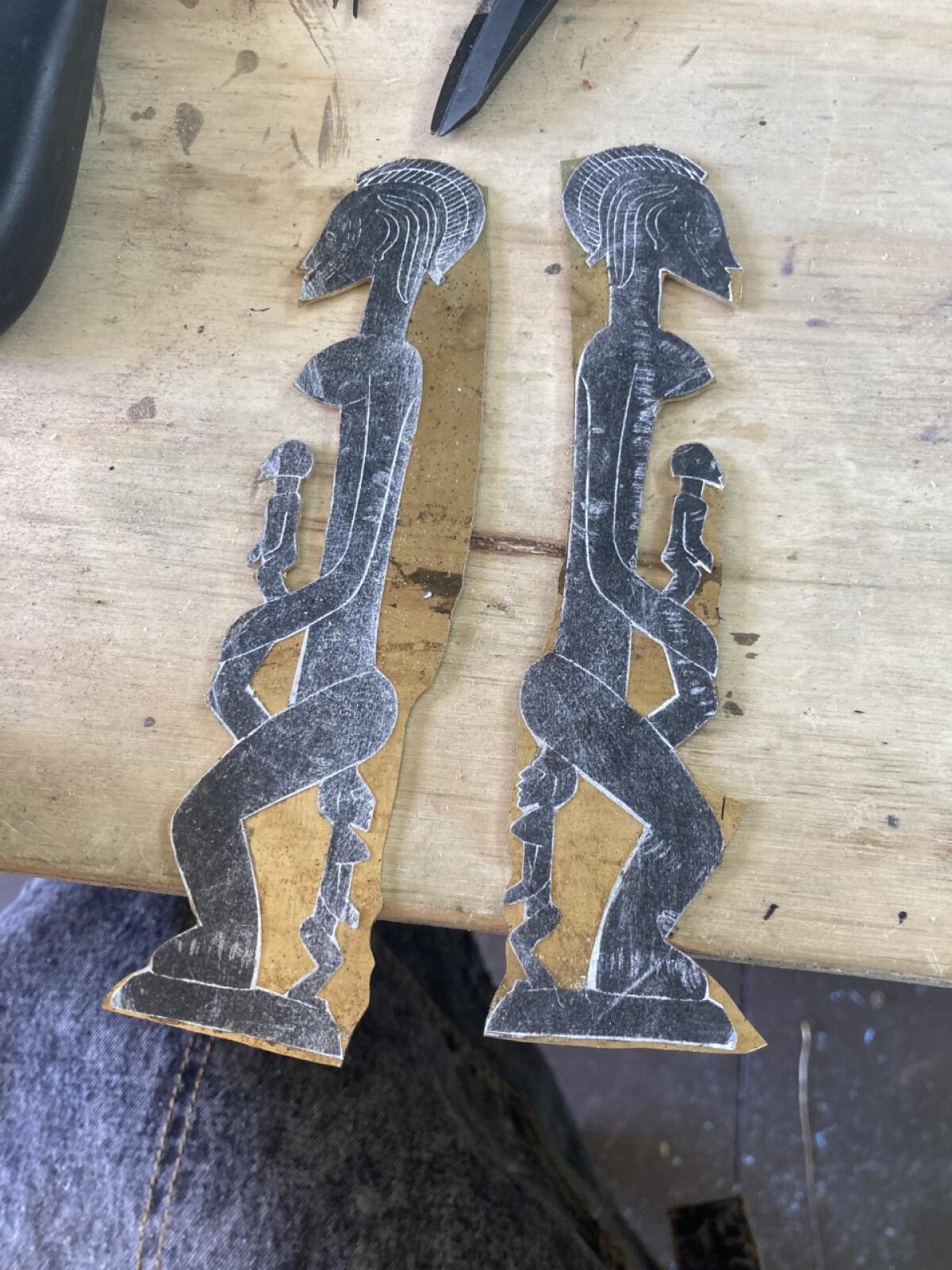
Many, if not most, of the pieces have meaning beyond just beauty.
Yes. I did want to share that there was an Easter egg in that piece that Ramonda wore during the flood scene.
Do tell.
So the piece that I designed and created for the Ramonda flood scene, I intentionally, No. 1, created this piece for this scene. All those totems. There’s two totems, and there’s one mask in the middle. So the two totems on the side, it’s someone sitting on another person, like a smaller version of themselves, and they’re holding a smaller version. So when I put that on, I incorporated that piece into the metal breastplate because that was my Easter egg showing that Ramonda was sitting on a legacy in her ancestry, which T’challa, he’s not her ancestor, but he has become an ancestor within this film. And now, she was about to pass on her legacy to Shuri.
Wow.
I intentionally put that in there because it is a legacy-passing type of piece. It’s from Benin, which I thought was important for me to incorporate some symbolism from the continent that really has meaning to it when it comes to rituals. Because what she did was very ritualistic. She gave her life so that someone else can survive. I incorporated rubies into that piece and intentionally put in really rich-looking, lustrous stones because I wanted her last image on film to be one of her encrusted with stones. We see a lot of queens from other cultures in diamonds and rubies and emeralds. I thought it was important for Ramonda to have that as well, as a queen. And I don’t think I’ve ever seen Angela Bassett pass away on a film, so I thought it was important to get something incredibly beautiful. All around the entire piece, you see labradorite, there’s some ruby in there, some tiger’s eyes, some other stones that I intentionally put in there to just uplift this idea of the queen of Wakanda in her last moment.
More to Read
Only good movies
Get the Indie Focus newsletter, Mark Olsen's weekly guide to the world of cinema.
You may occasionally receive promotional content from the Los Angeles Times.
